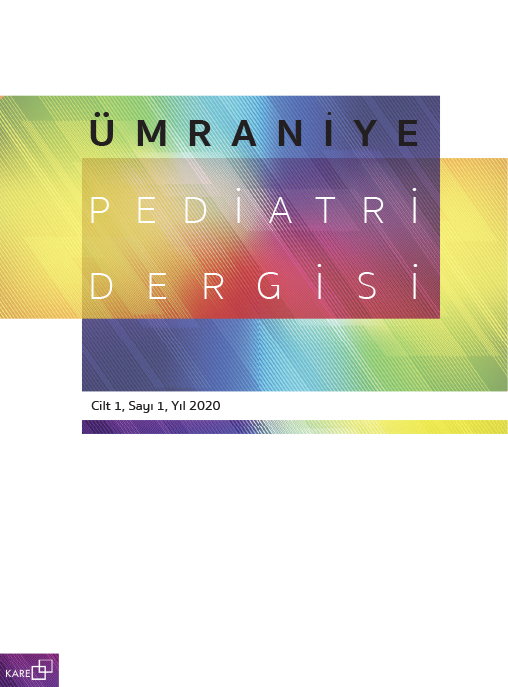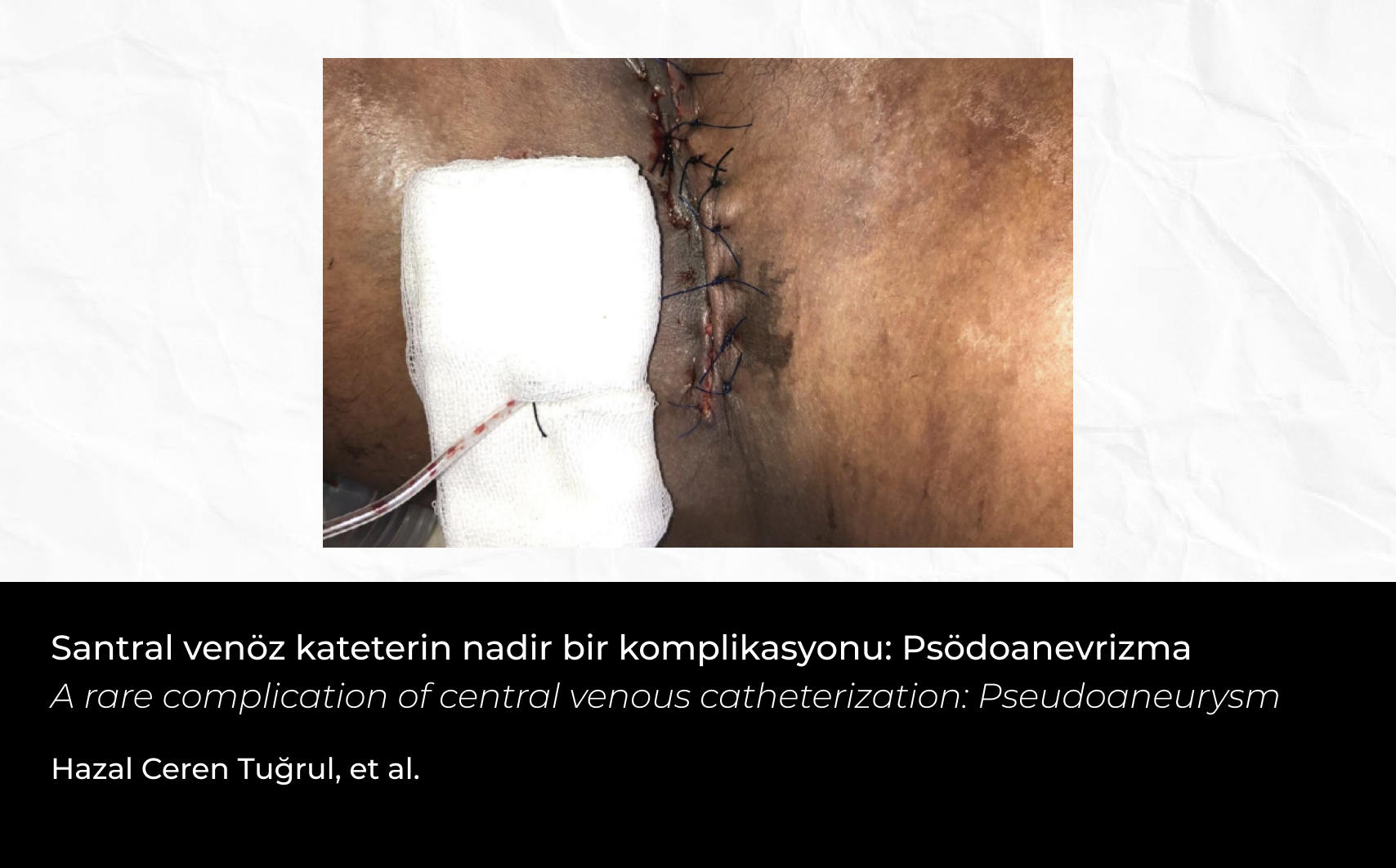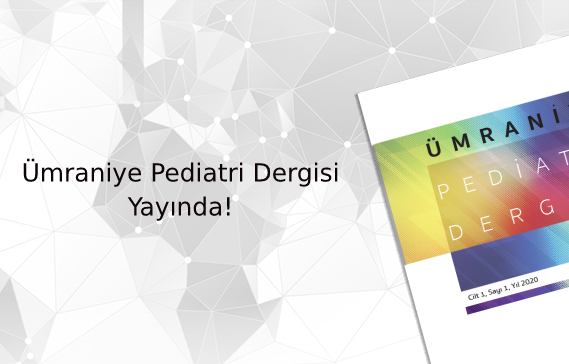2Bahçeşehir Üniversitesi Tıp Fakültesi, İstanbul, Türkiye
3Bahçeşehir Üniversitesi Tıp Fakültesi, Çocuk Sağlığı ve Hastalıkları Kliniği Anabilim Dalı, İstanbul, Türkiye
Özet
Amaç: Febril konvülziyon (ateşli havale), 6 ay-6 yaş arası, daha önce afebril nöbet geçirmemiş, metabolik bozukluk ve merkezi sinir sistemi enfeksiyonu olmaksızın görülen ateşli nöbetlerdir. Febril konvülziyon (FK) ile başvuran hastalarda tanısal incelemeler, izlem ve tedavi günümüzde halen tartışmalıdır. Bu çalışmada, febril konvülziyon nedeniyle başvuran hastaların klinik özellikleri, elektroensefalografi (EEG) ve nörogörüntüleme bulguları, aldıkları tedavilerin değerlendirilmesi ve literatürle karşılaştırılması amaçlanmıştır.
Gereç ve Yöntemler: Şubat 2020 ile Aralık 2024 tarihleri arasında febril konvülziyon nedeniyle Bahçeşehir Üniversitesi Tıp Fakültesi, Medicalpark Göztepe Hastanesi Çocuk Nöroloji Polikliniği’ne başvuran hastalar retrospektif olarak incelenmiştir. Febril konvülziyon tanısı konmuş olan, yaşları 6–72 ay arasında olan toplam 171 hastanın öykü, muayene bulguları ve varsa EEG ile radyolojik görüntülemeleri hasta dosyalarından taranmıştır.
Bulgular: Çalışmamızda, erkeklerin oranı (%62,5) kızlara (%37,4) göre daha fazla bulunmuş; ortalama yaş 22,93±1,006 ay olarak saptanmıştır. Hastaların %50,9’u 18 ayın altında, %17,5’i 18–24 ay arasında ve %31,6’sı 24 ay ve üzerindedir. Yaş arttıkça febril konvülziyon ile başvuran hasta sayısının azaldığı tespit edilmiştir. Tüm yaş gruplarında en sık görülen nöbet tipi jeneralize tonik-klonik nöbet olmuştur. Ortalama nöbet sayısı 2,04±0,106 ve rekürrens oranı %53,2 (91 hasta) olarak belirlenmiştir.
Tartışma: Çalışmamızdaki bulgular, literatürle genellikle uyumlu olmakla birlikte, fokal nöbet ile başvuran hasta sayısının (%0,6) ve antiepileptik ilaç kullanım oranının (%29,2) daha düşük olduğu gözlemlenmiştir.
2Bahçeşehir University Faculty of Medicine, İstanbul, Türkiye
3Department of Pediatrics, Bahçeşehir University Faculty of Medicine, İstanbul, Türkiye
Abstract
Objective: Febrile convulsions (FC) are seizures associated with fever in children aged 6 months to 6 years who have not previously experienced afebrile seizures and do not have metabolic disorders or central nervous system infections. Diagnostic investigations, follow-up, and treatment of patients presenting with febrile convulsions are still debated. This study aimed to evaluate the clinical characteristics, electroencephalography (EEG) and neuroimaging results, and treatments received by patients with febrile convulsions, and to compare them with the literature.
Material and Methods: A retrospective review was conducted of patients who presented with febrile convulsions to the Pediatric Neurology outpatient clinic at Bahçeşehir University Faculty of Medicine, Medicalpark Göztepe Hospital between February 2020 and December 2024. Among the patients diagnosed with febrile convulsions, a total of 171 children aged 6–72 months were included. Their history, physical examination results, and, if available, EEG and radiological imaging were reviewed from patient records.
Results: In our study, males constituted a higher proportion (62.5%) compared to females (37.4%). The mean age was found to be 22.93±1.006 months. Of the patients, 50.9% were under 18 months, 17.5% were between 18–24 months, and 31.6% were 24 months and older. It was observed that the number of patients presenting with FC decreased with increas-ing age. Generalized tonic-clonic seizures were the most common seizure type across all age groups. The mean number of seizures was 2.04±0.106, and recurrence was detected in 91 patients (53.2%).
Conclusion: These rates were consistent with the literature; however, the number of patients presenting with focal sei-zures (0.6%) and the rate of antiepileptic drug use (29.2%) were found to be lower in our study.Material and Methods: A retrospective review was conducted of patients who presented with febrile convulsions to the Pediatric Neurology outpatient clinic at Bahçeşehir University Faculty of Medicine, Medicalpark Göztepe Hospital between February 2020 and December 2024. Among the patients diagnosed with febrile convulsions, a total of 171 children aged 6–72 months were included. Their history, physical examination results, and, if available, EEG and radiological imaging were reviewed from patient records.
Results: In our study, males constituted a higher proportion (62.5%) compared to females (37.4%). The mean age was found to be 22.93±1.006 months. Of the patients, 50.9% were under 18 months, 17.5% were between 18–24 months, and 31.6% were 24 months and older. It was observed that the number of patients presenting with FC decreased with increasing age. Generalized tonic-clonic seizures were the most common seizure type across all age groups. The mean number of seizures was 2.04±0.106, and recurrence was detected in 91 patients (53.2%).
Conclusion: These rates were consistent with the literature; however, the number of patients presenting with focal sei-zures (0.6%) and the rate of antiepileptic drug use (29.2%) were found to be lower in our study.






 Hatice Gülhan Sözen1
Hatice Gülhan Sözen1 





